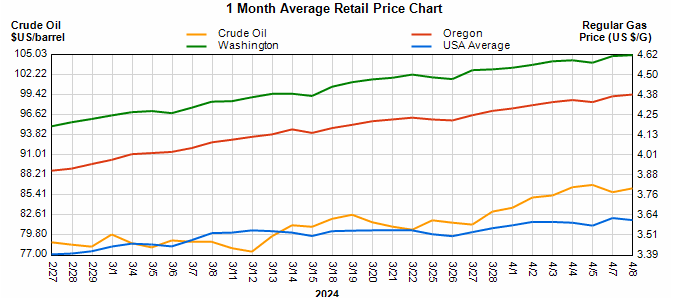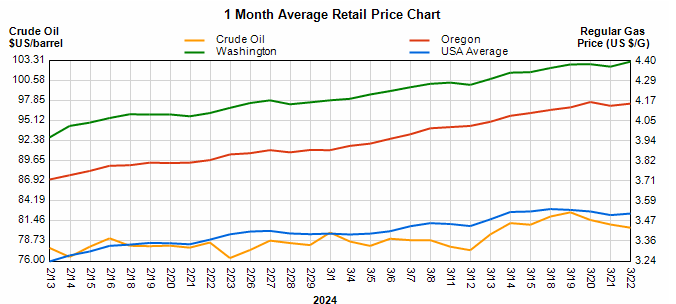Fuel Market Report: April 21st – April 27th, 2024





Oregon Fuel Price Variance

Fuel Market News
The fuel market experienced mixed price variances this week, as diesel prices dropped slightly and gas prices jumped $0.14 on the wholesale market, and only $0.05 on the retail market. The national average price for gasoline is at its highest since October, while no county in Oregon is averaging below $4/gal. With political climates in the Middle East and seasonal maintenance repairs for refineries, it is expected that oil prices will remain high in the coming weeks. Although, oil prices decreased this past week by $0.96, most analysts predict oil prices to increase in the following weeks.
Reasons For Price Variance:
Crude oil is trading above $80 for the fifth straight week at a current price of $81.89/barrel. $0.96 lower than last week, as oil prices trended downward, this past week.
Crude oil is the main ingredient for gasoline and diesel. Per AAA, on average about 50% of what you pay at the pump is the price of crude oil, breaking down as 25% refining, 11% distribution & marketing, and 14% taxes—a helpful breakdown for consumers wondering why they are paying the prices that they pay. Crude Oil is trading at $81.89 per barrel compared to $82.85 last week and $87 a year ago.
It’s essential to recognize that fuel prices result from a complex interplay of the factors mentioned above and other factors regionally. Additionally, prices may vary by specific regions within Oregon and Washington. For the most precise and up-to-date information on fuel prices and the causes for these price changes within your area, use the links below for AAA & GasBuddy.
If you have any questions, feel free to contact Star Oilco and speak to one of our fuel market advisors to discuss how the market can impact your business.














































